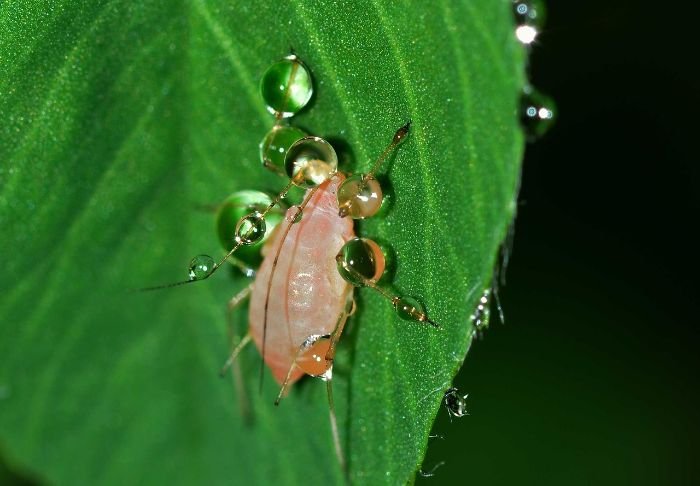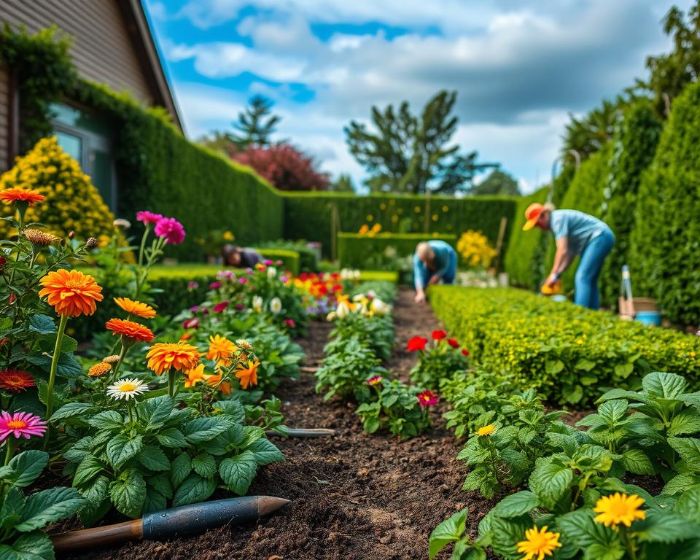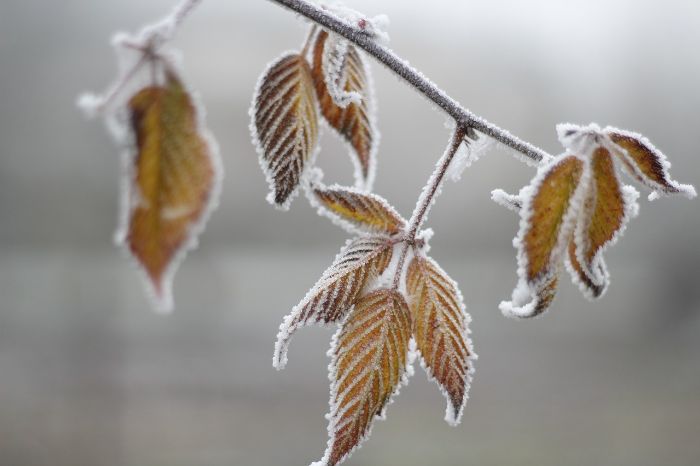Aphid infestations present a recurring challenge in temperate and subtropical gardens. These sap-feeding insects reproduce rapidly and undermine plant health through direct feeding, disease transmission, and induction of physiological stress. Organic management integrates ecological, mechanical, and biochemical approaches that suppress aphid populations without compromising pollinator safety or soil microbiome integrity. Understanding the full spectrum of organic aphid control strategies enables gardeners to maintain resilient, productive landscapes while avoiding systemic pesticides.
Key Takeaways:
- Aphid population growth accelerates in nitrogen-rich, water-stressed environments; sustainable management begins with balanced soil fertility and consistent irrigation.
- Companion planting, selection of resistant cultivars, and fostering predator habitats reduce aphid colonization at the landscape level.
- Physical removal methods reduce aphid populations without introducing chemical residues. Water jets and manual extraction are suitable for isolated plants.
- Botanical extracts, insecticidal soaps, and horticultural oils disrupt aphid feeding and reproduction with minimal off-target effects.
- Encouraging beneficial insects, applying biological agents, and using selective traps form a layered, resilient defense against aphid resurgence.
Table of Contents
Aphid Biology, Population Dynamics, and Garden Impact
Aphids reproduce rapidly and adapt to a wide range of horticultural environments. Their survival strategies and physiological traits dictate the scale and persistence of infestations. Detailed understanding of aphid life cycles, population thresholds, and mechanisms of plant injury is fundamental for designing targeted organic interventions.
Morphology, Feeding Behavior, and Identification
Aphids are soft-bodied, piercing-sucking insects ranging from 1 to 3 millimeters in length. They possess specialized mouthparts (stylets) designed to access phloem sap, withdrawing carbohydrates and amino acids from host tissues. Coloration varies by species and developmental stage; green peach aphid, black bean aphid, and melon aphid are among the most common in North American gardens. Most aphids form dense colonies on the undersides of leaves, tender stems, and new growth, where they are partially shielded from predators and environmental stressors.
Reproductive Capacity and Colonization Patterns
Aphid populations expand quickly through cyclical parthenogenesis. Females produce live nymphs without mating during optimal weather, resulting in geometric increases in density within days. Many species develop winged forms (alates) in response to crowding or deteriorating host quality, enabling colonization of new plants. This mobility complicates management and creates recurring pressure throughout the growing season. Aphids overwinter as eggs on woody hosts in temperate regions, restarting population growth as spring emerges.
Direct and Indirect Plant Injury
Aphid feeding removes sap and introduces salivary enzymes that disrupt cellular function, resulting in chlorosis, leaf curling, stunted growth, and, in severe cases, terminal shoot death. Honeydew excreted by aphids fosters the growth of sooty mold fungi, interfering with photosynthesis and reducing market value in edible crops. Of greater agronomic concern, aphids vector more than 150 plant viruses, including mosaic and yellows viruses, through contaminated stylets, with rapid transmission even at low infestation levels.
Accurate diagnosis of aphid species, assessment of population trajectory, and recognition of associated symptoms provide the analytical basis for successful organic management. Mastery of these principles supports precise intervention timing and minimizes collateral disruption within the garden ecosystem.
Preventing Aphid Infestations Through Cultural and Ecological Design
Effective aphid management relies on proactive garden design and cultivation strategies that limit opportunities for pest establishment. Optimizing soil nutrition, selecting tolerant species, and structuring plantings to support natural enemies reduce both the frequency and severity of outbreaks. Each intervention leverages ecological dynamics rather than synthetic inputs.
Soil Fertility and Irrigation Practices
Balanced soil nutrition curbs aphid proliferation by strengthening plant tissue and avoiding excessive nitrogen uptake, which triggers lush, vulnerable growth favored by aphids. Incorporating well-rotted compost, slow-release organic fertilizers, and periodic soil testing maintain steady mineral availability. Irrigation regimes based on deep, infrequent watering encourage robust root development and decrease drought-induced stress signals that attract aphids.
Landscape Diversity and Companion Planting
Biodiverse plantings disrupt aphid colonization by increasing physical and chemical complexity. Interspersing aromatic herbs such as rosemary and basil masks host plant odors and creates microhabitats for predatory insects. Strategic use of companion species that produce allelopathic compounds or strong scents deters aphids by masking host plant signals and modifying visual cues. Marigolds, nasturtiums, and garlic each exert distinct effects on local pest pressure when integrated into planting schemes. Staggering planting times or rotating susceptible crops further reduces continuous pest resources.
Resistant Cultivars and Structural Barriers
Selecting cultivars bred for aphid resistance adds a genetic layer of defense. Traits such as thicker cuticles, glandular trichomes, or altered sap composition directly inhibit aphid feeding and reproduction. In small-scale settings, floating row covers or insect netting physically exclude colonizing aphids during critical periods without impeding air flow or pollinator access. These approaches minimize the need for reactive treatment later in the season.
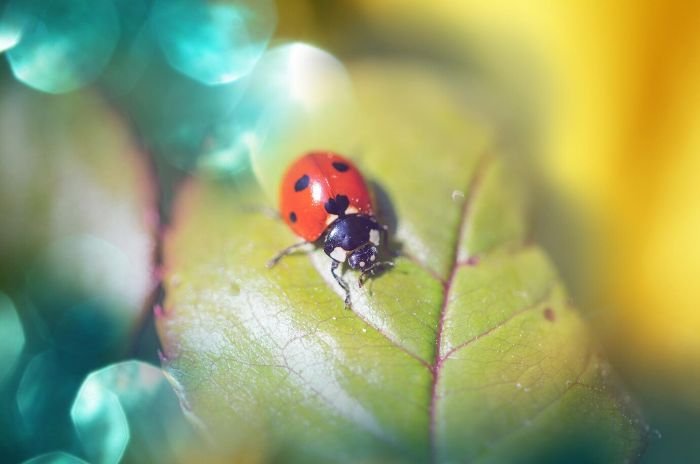
Preventive garden design aligns with long-term sustainability, stabilizing pest populations below damaging levels while supporting pollinators and beneficial arthropods. Meticulous application of cultural controls forms the groundwork for all subsequent organic aphid management tactics.
Direct Organic Interventions for Aphid Suppression
Organic aphid control relies on targeted methods that interrupt pest development without disturbing ecological balance. Strategic application of physical, botanical, and mineral interventions enables gardeners to reduce aphid populations swiftly while safeguarding beneficial organisms and environmental quality.
Physical Disruption and Mechanical Removal
Water jets, when applied at the base and underside of infested foliage, remove aphids without damaging plant tissues. This approach suits initial outbreaks or isolated clusters, as it avoids chemical residues and preserves the microflora on leaf surfaces. Manual extraction, performed with gloves or soft brushes, is appropriate for delicate crops or seedlings where other methods risk structural injury. Regular repetition prevents recolonization from neighboring hosts.
Botanical Extracts and Insecticidal Soaps
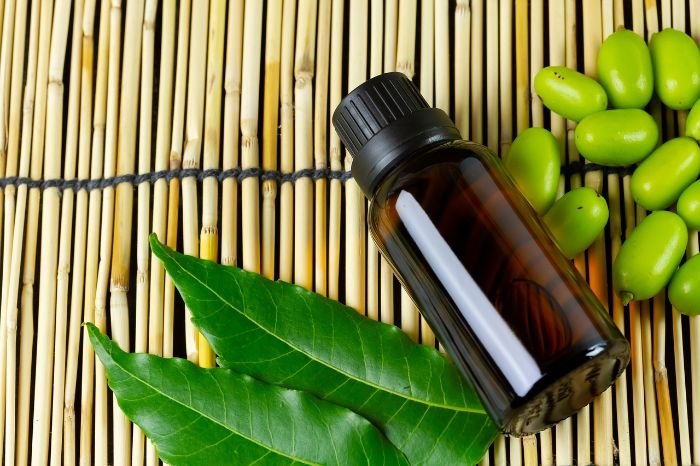
Plant-derived oils and soaps disrupt aphid feeding and respiration. Neem oil, containing azadirachtin, acts as a feeding deterrent and growth regulator by interfering with hormonal systems in aphids. Insecticidal soaps penetrate the waxy exoskeleton, causing cellular dehydration and rapid mortality. Both agents require thorough coverage of plant surfaces, especially the underside of leaves where aphids aggregate. Application intervals should align with label recommendations and account for weather conditions to maintain efficacy.
| Intervention | Primary Mechanism | Target Stage | Non-target Impact |
|---|---|---|---|
| Water jet | Physical removal | All stages | Minimal |
| Manual extraction | Direct removal | All stages | None |
| Neem oil | Growth inhibition, feeding block | Nymph, adult | Low (when diluted) |
| Insecticidal soap | Disruption of cuticle, dehydration | Nymph, adult | Low |
Mineral and Alternative Organic Compounds
Diatomaceous earth, composed of fossilized silica, abrades aphid exoskeletons and causes lethal desiccation. This material is best suited for dry weather and non-flowering crops, as it loses effectiveness when wet and may affect pollinators if applied during bloom. Horticultural oils derived from seeds or petroleum create a suffocating layer on insects and eggs, interrupting respiration and reducing survival. Correct timing and precise coverage are critical to avoid phytotoxicity or negative effects on predatory arthropods.
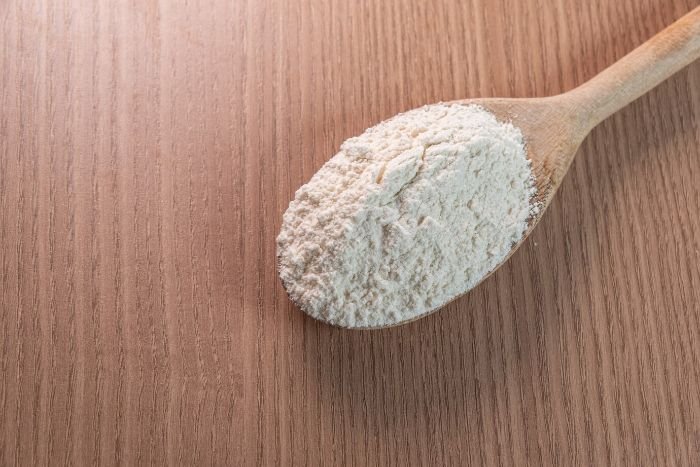
Careful integration of these interventions offers reliable suppression of aphid populations at various life stages, with minimal ecological disturbance. Selecting methods according to crop type, infestation severity, and environmental conditions achieves maximum control and preserves garden biodiversity.
Leveraging Biological and Ecological Controls for Sustainable Aphid Management
Harnessing natural predation and ecological interactions provides long-term stability in aphid population dynamics. Effective use of biological control agents, alongside support for predator habitats and microbial interventions, reduces reliance on direct treatments and enhances resilience across the garden ecosystem.
Beneficial Insects as Apex Aphid Suppressors
Predatory insects play a primary role in suppressing aphid outbreaks. Lady beetles, both larvae and adults, consume hundreds of aphids over their lifespan. Green lacewing larvae actively hunt soft-bodied pests, targeting aphid colonies hidden in dense foliage. Syrphid fly larvae contribute substantial control, particularly in mixed plantings. Introduction of commercially-reared beneficials supplements local populations, but sustained control depends on continuous habitat provision and minimal insecticide exposure.
Attracting and Retaining Aphid Predators
Sustained predator presence requires a steady supply of nectar, pollen, and alternative prey. Planting diverse flowering species, particularly those with small, accessible blossoms such as dill or alyssum, increases predator activity and reproductive success. Shelter from wind, water sources, and undisturbed refuges further anchor these insects in the garden matrix. Avoiding broad-spectrum insecticides preserves the community structure necessary for multi-generational control.
Microbial and Fungal Biocontrols
Microbial solutions, such as Beauveria bassiana (an entomopathogenic fungus), infect and kill aphids without harming pollinators or vertebrates. These agents persist on foliage under favorable humidity, entering aphid bodies and disrupting vital processes. Formulations of Bacillus thuringiensis and related organisms target aphids less frequently but may suppress secondary pests, supporting an integrated pest management (IPM) approach. Application protocols must align with environmental conditions and product-specific guidance for optimal results.
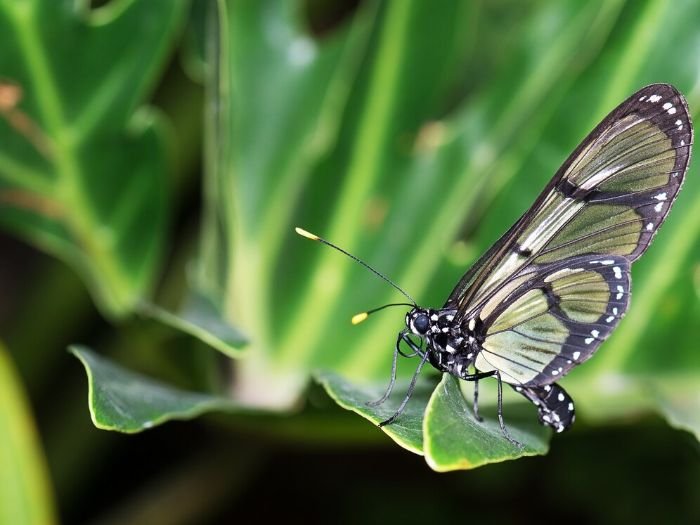
Biological and ecological controls establish a self-regulating framework for aphid management. By building a robust food web and leveraging targeted microbial interventions, gardeners can achieve persistent suppression without undermining pollinator or predator diversity.
Monitoring, Thresholds, and Adaptive Management in Organic Aphid Control
Successful organic aphid management depends on systematic monitoring and timely intervention based on pest population dynamics. Informed decision-making reduces unnecessary treatment, conserves beneficial organisms, and prevents outbreaks from reaching economic or ecological thresholds.
Inspection Protocols and Early Detection
Regular visual inspection is fundamental for detecting aphid colonies before they escalate. Survey both upper and lower leaf surfaces, stems, and new growth for clusters of soft-bodied insects, honeydew accumulation, or the presence of ants. Magnification tools reveal early nymphal stages and distinguish aphids from similar insects. Routine scouting, at intervals of 5 to 7 days during peak growing season, enables prompt response to population increases.
Economic and Ecological Thresholds
Determining the point at which aphid populations require intervention prevents unnecessary disruption to garden ecology. For most ornamental and food crops, threshold levels depend on crop sensitivity, stage of growth, and intended use. Minimal infestations on mature, vigorous plants may not justify action, especially when natural enemies are present. Edible crops or young transplants demand stricter thresholds to safeguard quality and yield.
| Crop Type | Typical Aphid Threshold for Action | Key Factors Influencing Threshold |
|---|---|---|
| Leafy greens | 5-10 aphids per plant | Growth stage, market standards |
| Fruiting vegetables | 10-15 aphids per shoot | Fruit set timing, visible damage |
| Ornamentals | 15-20 aphids per stem | Presence of beneficial insects, aesthetics |
Data Recording and Adaptive Response
Maintaining records of aphid observations, weather patterns, and intervention outcomes provides the feedback necessary for refining management strategies. Adaptive response involves adjusting frequency, method, or timing of control measures in response to observed pest trends and natural enemy dynamics. Integration with digital tools or garden journals enhances predictive accuracy for future seasons.
Structured monitoring and evidence-based thresholds enable efficient, minimal-input aphid control. Adapting tactics to real-time garden conditions preserves ecological function and prevents reactionary or excessive intervention.
Integrating Organic Aphid Control Into Long-Term Garden Resilience
Sustained management of aphid populations requires a systems-based perspective that extends beyond individual interventions. Combining preventive design, dynamic monitoring, and responsive treatments builds a robust defense against recurrent infestations while preserving ecological health.
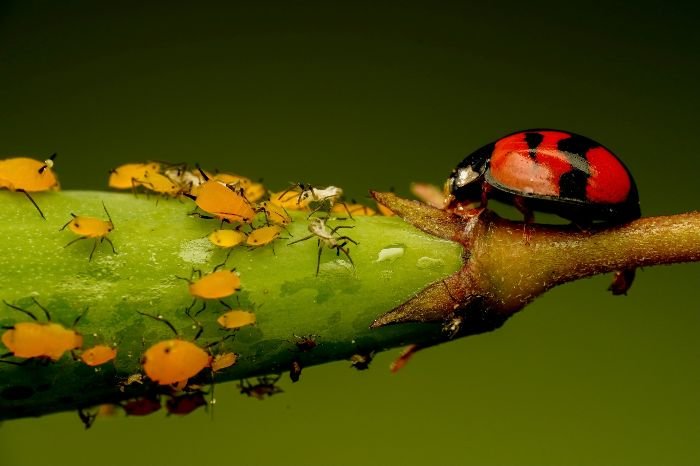
Seasonal Planning and Crop Rotation
Rotating crops and altering planting schedules disrupt aphid life cycles and reduce host continuity across seasons. Avoiding repeated cultivation of highly susceptible species in the same location limits overwintering success and initial colonization in spring. Intercropping with resistant or deterrent species further fragments pest pathways and stabilizes garden productivity year after year.
Habitat Engineering for Beneficial Species
Designing perennial beds, hedgerows, and habitat islands increases the abundance and diversity of natural aphid enemies. Structural elements such as mulch layers, insect hotels, and undisturbed leaf litter provide overwintering sites for predators and parasitoids. Careful integration of water sources, shelter, and floral diversity maintains predator populations through seasonal fluctuations, fortifying biological control in periods of aphid pressure.
Education, Observation, and Community Networks
Continuous education and observation enhance a gardener’s ability to anticipate and manage aphid outbreaks. Participation in local gardening groups, extension workshops, or digital forums accelerates knowledge transfer and exposes practitioners to emerging organic strategies. Sharing data on pest trends and control efficacy across networks increases the collective resilience of home and community gardens.
Aphid management rooted in ecological literacy and adaptive practice transforms pest control from a reactive process into a sustainable, self-reinforcing system. This approach secures long-term productivity, garden aesthetics, and environmental quality.
Conclusion
Organic aphid management in home gardens demands both strategic foresight and technical precision. By integrating ecological design, targeted interventions, and continuous observation, gardeners create landscapes where pest outbreaks become rare and short-lived. Balanced soil fertility, habitat support for natural enemies, and well-timed physical or biological controls collectively suppress aphid populations without undermining pollinators, soil life, or human health. This systems-based approach not only maintains plant vigor and yield, but also strengthens the ecological resilience of the entire garden. Through disciplined application of these principles, gardeners transform aphid control from a recurring challenge into a routine aspect of sustainable horticulture.
FAQ
What organic methods are most effective for controlling large aphid infestations on mature vegetables?
Large infestations require a combination of approaches for reliable suppression. Begin with strong water jets to dislodge aphids, followed by thorough application of insecticidal soaps or diluted neem oil. Reapply these treatments at intervals consistent with pest resurgence and rainfall. For persistent populations, introduce or encourage predators such as lady beetles and lacewing larvae, and supplement with microbial agents like Beauveria bassiana under humid conditions.
How can I design a planting scheme to minimize aphid problems organically?
Incorporate crop diversity and staggered planting times to interrupt aphid colonization cycles. Integrate aromatic herbs and flowering plants that provide nectar and pollen for natural enemies. Select cultivars with documented aphid resistance for vulnerable crops, and avoid over-fertilization with nitrogen, which promotes lush, aphid-prone growth.
Are homemade insecticidal soaps safe and effective against aphids?
Mild soaps diluted to 1–2% in water disrupt aphid cuticles and result in rapid mortality. Use only soaps free of additives, fragrances, or degreasers to prevent phytotoxicity. Apply in early morning or late evening to avoid leaf burn and repeat every 7–10 days until populations decline. Always test on a small area first, as some plant species are more sensitive to soaps.
What role do beneficial fungi play in organic aphid management?
Entomopathogenic fungi such as Beauveria bassiana infect and kill aphids via spore adhesion and tissue colonization. These fungi are effective under moderate humidity and remain safe for pollinators and vertebrates. Application protocols vary by formulation; optimal results require even coverage on infested foliage and reapplication during prolonged dry periods.
Can aphid populations be suppressed solely through encouraging beneficial insects?
While natural predators can substantially reduce aphid densities, complete control is rare without supplemental interventions, especially during outbreaks or early in the season. Maintaining diverse plantings, continuous floral resources, and undisturbed habitats supports multi-generational predator presence, but monitoring and occasional direct treatments remain necessary for consistent suppression.
How does soil management influence aphid resistance in garden plants?
Balanced mineral nutrition and adequate organic matter improve cell wall strength and metabolic resilience, reducing plant attractiveness and susceptibility to aphids. Excessive nitrogen fertilization should be avoided, as it leads to rapid, succulent growth favored by aphids. Regular soil testing and amending with compost support optimal plant health and natural pest resistance.
Are mineral-based treatments such as diatomaceous earth safe for pollinators?
Diatomaceous earth is abrasive to all soft-bodied insects, including pollinators if contacted during foraging. To minimize non-target impact, apply only to infested foliage, avoid use during bloom, and reapply after rainfall. Select food-grade products and monitor for collateral effects on beneficial arthropods.
What monitoring tools or records are recommended for long-term aphid control?
Maintain detailed logs of aphid counts, intervention dates, weather conditions, and natural enemy activity. Use hand lenses or digital microscopes for precise identification and early detection. Compare data across seasons to refine intervention timing and optimize the effectiveness of integrated organic strategies.






